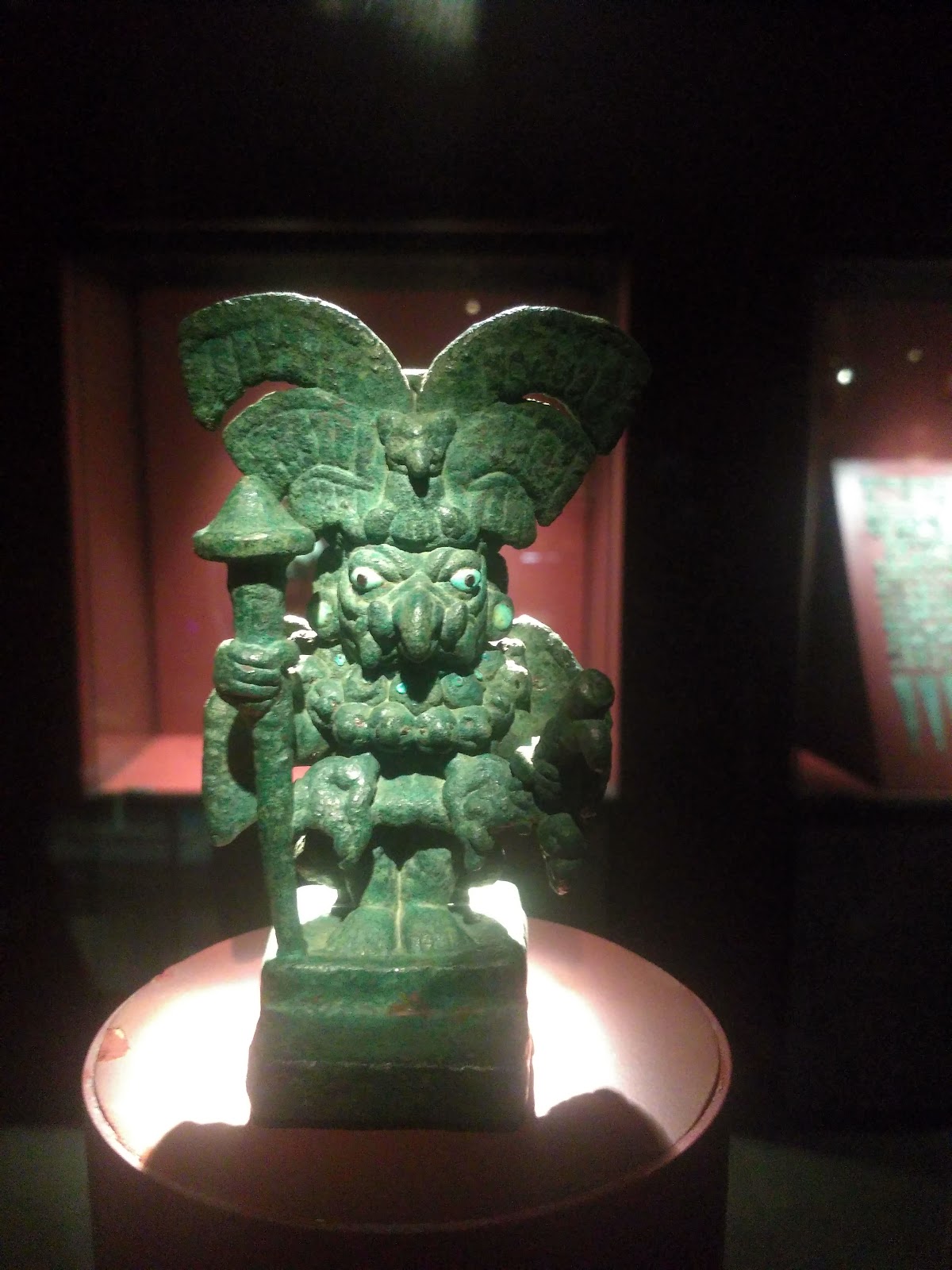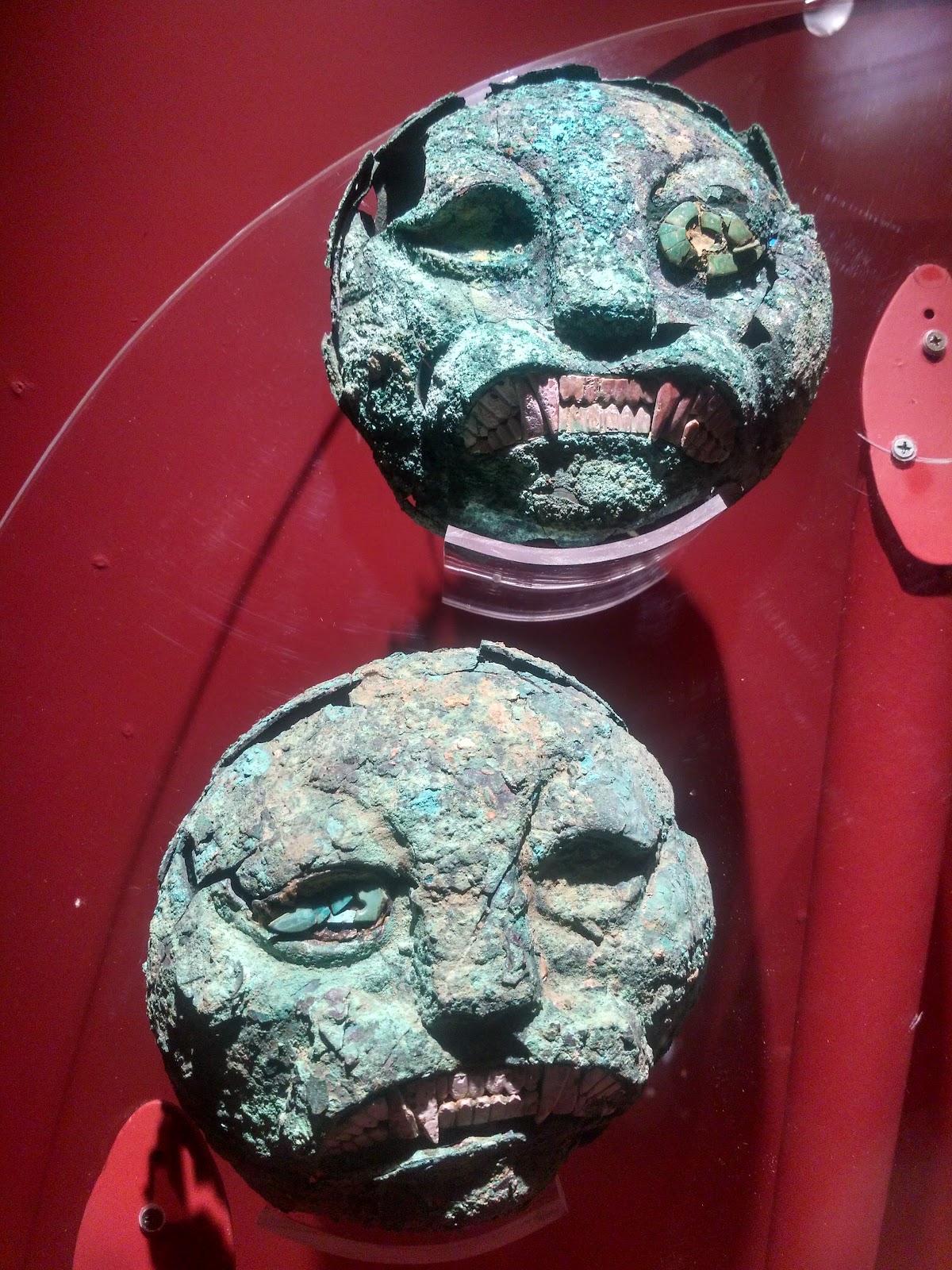Despite being down at sea level, 2700m beneath Cajamarca, Chiclayo is surprisingly cool due to the cold Humboldt Current that flows offshore in the Pacific just 20km away, so at least the climate wasn't a shock when we arrived. The size and pace was slightly foreign though, as it was the largest city we'd been in since Manaus, about a month earlier. Chiclayo is Peru's fourth largest city with a population of about a million. It's bustling city place, but with few obvious tourist attractions in the city itself.
What we mostly had planned for our time in town was day trips to the outlying villages and eating. Being our only coastal(ish) stop in Peru, there could be no better place to gorge on Ceviche, that delicious combination of raw fish (or other seafood, often including octopus) marinated or “cooked” in lime juice and salt and served with (variously) steamed or crunchy corn kernels, swee potato and seaweed. We ate ceviche at Chiclayo's big central market (traditional style) the, at a little resto-bar near our hotel (made with a more fishy, oily mackrel-like fish than the typical whitefish) and we ate double ceviche (two lunches in a row) with the revolutionary tortita (little deep fried pancake) to soak up the delicious juice during our slightly accidental two night stay in the town (suburb really) of Lambeyeque just north of Chiclayo.
We also had probably the best bread I've ever had in South America which came, rather unexpectedly, from a big chain supermarket just down the street from our hotel that we popped into on our first night in town. And of course some of the local speciality which, in the case of Chiclayo, was Tortilla de Raya. Basically an omelette filled with slivers of dried, then grated, then reconstituted stingray. I'm not a big fan of dried-salted fish, but A. I didn't realize the ray was dried when I ordered it and B. it was surprisingly okay. The restaurant we had it at (for brunch) got bonus points for having little flasks of intensely powerful coffee at each table which were then added to cups of hot water to make your breakfast cuppa.
On the next afternoon we had a few more special drinks, these at a fun little neighbourhood bar around the corner from our hotel made with house-infused strawberry Pisco (a Peruvian [or Chilean… major point of contention there!] spirit similar to grappa).
Dessert? Why yes, thank you. It seemed that artisanal ice cream was a big deal in Chiclayo, so it would've been impolite not to try some (our flavours included Pisco Sour and mora [blackberry]). We also had a few incredibly sweet but delicious pastries stuffed with manjarblanco, which is the Peruvian equivalent of Argentina's dulce de leche.
So that dispenses with one half of our activities in Chiclayo. The other half was occupied almost entirely with museums. The area around Chiclayo is a hotbed of pre-Columbian archaeological sites. Most of these predate the Inca by a long time. The foremost of these were the Moche culture. They didn't do stonework like the Incas. They did produce plenty of monumental structures, but these were mostly huge mud brick ziggurats that, while still very present in the landscape are just so big and pale brown that they just blend into the desert landscape. So from an aesthetic perspective, the highlights of their creations are their ceramics and especially their gold and silver metalwork.
The first museum was in the town of Sipan, site of many of the best preserved Moche tombs. The artifacts in the museum were fabulous. And they were presented fabulously. There were lots of photos of the tombs during excavation illustrating their condition when they were first found. This really gave you an appreciation for how much minutely painstaking work was involved first in excavating, then in restoring them.


But perhaps the coolest bit of all was that the excavated tombs and their ziggurat were just across the street. They'd been left intact, and in many cases had replicas of the artifacts placed back in situ so you could see, well not quite what they looked like when placed or when excavated, but a cool sort of hybrid of the two.
Our other two museums were just north of Chiclayo in Lembayeque. We moved accommodation for these partly because it's nice to bring some business in the towns where the attractions you visit are located rather than just the major centres and partly because we didn't realize that Lembeyaque was really just a suburb of Chiclayo 11km from the centre.
The first of these, which we visited on the afternoon we arrived was the Bruning Museum, named after (and in fact founded by) a German archaeologist/anthropologist who was one of the first to take an interest in the area. It contained the treasures of the first eighty years or so of excavations in the area. Like the Sipan museum it did a great job of putting its collection in historical (both ancient and recent).
For a long time the Bruning was the premier museum of northern coastal Peru. That all changed in 1987 when an American archaeologist started noticing some very impressive pieces appearing in the markets in and around Chiclayo. He concluded that a major site must have been discovered by looters.
By carefully asking around he discovered the location of the site and remarkably quickly measures (including an act of US Congress!) were put in place to protect it. Not only that, but it turned out that the looters had thusfar only scratched the surface of its contents. So the tomb of the Lord of Sipan himself, a Moche ruler from around 600 AD was entirely untouched. While many of the contents of neighbouring tombs are in the Sipan museum we'd visited earlier, the very brightest gems are in a specially constructed gallery in Lembayeque.
Unfortunately for us we'd misunderstood the opening hours, so it was only when we went to take a photo of the (pretty cool looking) museum building on Sunday afternoon we discovered that it was closed on Monday and we wouldn't be visiting the next morning as planned.
No matter. We had a cheap and pleasant place to stay so we spent a day looking around the market and local neighbourhood and trying (sadly failing) to get in on a local bingo game (we'd been misled about that too… the sign saying Bingo! Today! was an old one).
The museum was just as well done as the previous two and it's contents were even more astonishing. The Lord of Sipan's tomb has been called (with perhaps only slight exaggeration) the grandest unlooted tomb ever found. They are remarkably strict about what enters the museum (metal detectors and all) and cameras and mobile phones aren't on the list, so unfortunately we don't have by photos of the collection for you. You'll just have to trust that the hammered gold and silver and beaded items that were buried with the Lord are really amazing.
Lembayeque turned out to be our final overnight stop in Peru. After visiting the museum on Tuesday morning, we caught a bus north to the city of Piura. Once there we discovered that buses north to Loja, in Ecuador only ran in the early afternoon or at night. Since leaving in early afternoon would mean we'd do much of the journey in the dark anyway and would arrive in Loja at night we decided to hop on an overnight service that evening.
This gave me just enough time to spend our remaining Soles on some little Christmas gifts and a Peruvian football jersey for myself. I needed a new shirt anyway, and it seemed like a fun souvenir, though given Peru and Ecuador's unfriendly past history I may need to think twice about wearing it for a bit.
We crossed the border almost spot on midnight, to the point that if we'd been a couple of places ahead in the queue, Sarah and I might have entered Ecuador on different days. But the process was smooth and friendly, and when we arrived in Loja at 04:39 (it seems that it's only when you're scheduled to arrive before 06:00 that buses are ever early) Sarah had a new country on her list.
No comments:
Post a Comment